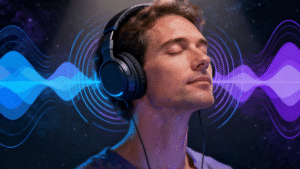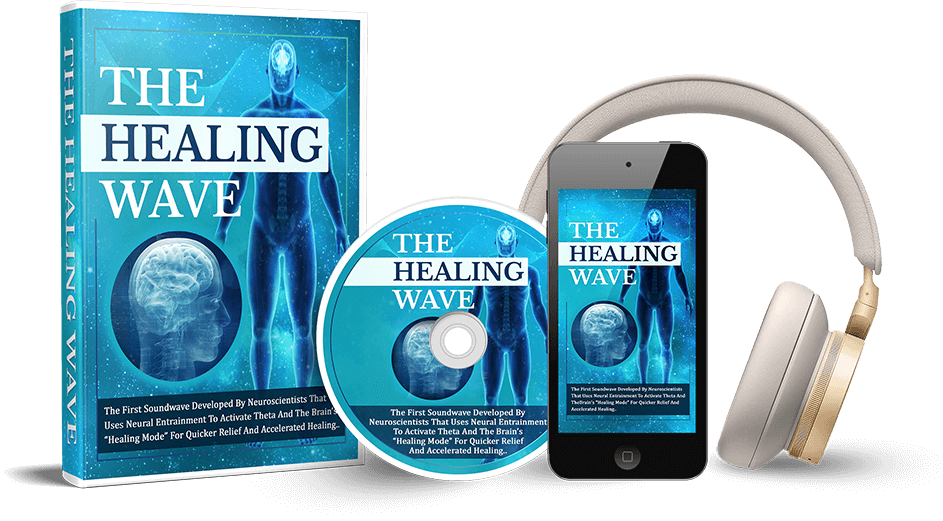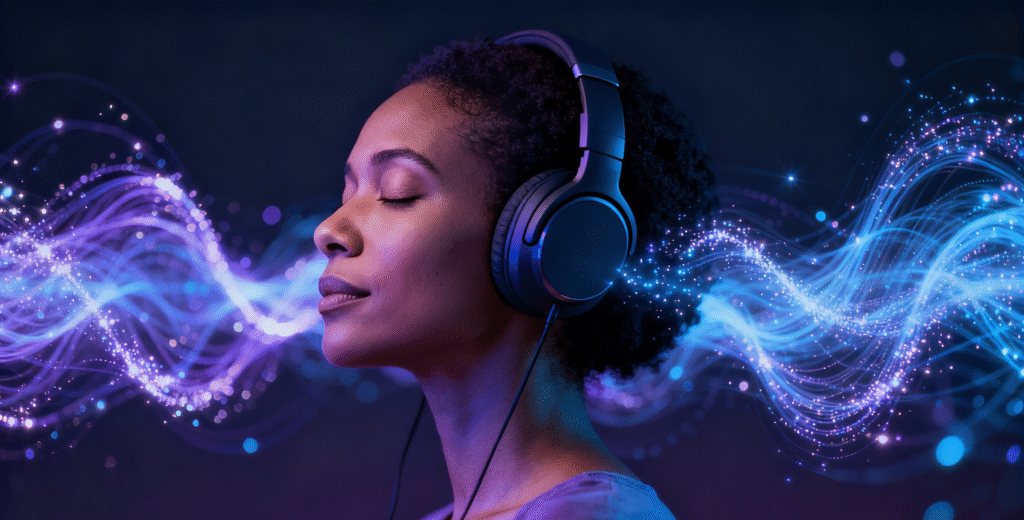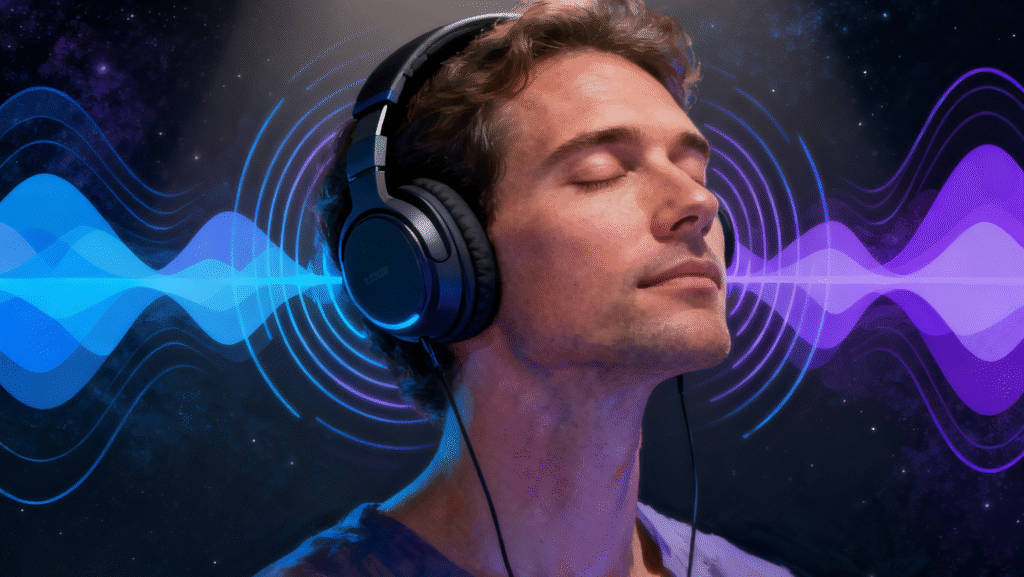Address
AVSSO 2242 SE 171st AVE Portland Oregon USA 97233
Work Hours
Monday to Friday: 7AM - 7PM
Weekend: 10AM - 5PM
Address
AVSSO 2242 SE 171st AVE Portland Oregon USA 97233
Work Hours
Monday to Friday: 7AM - 7PM
Weekend: 10AM - 5PM

For the past year, I’ve been stuck in a constant state of mental fog. My focus has been shot, my creativity was gone, and my brain just felt… slow. I tried everything: more coffee, less coffee, digital detoxes, a mountain of supplements… you name it. Nothing worked. So, I decided to try something a little ‘out there.’ For 30 days, I committed to listening to these strange, pulsating sounds called ‘theta waves’ Healing Wave that are supposed to heal and enhance your mind. I was a full-blown skeptic. But what actually happened over the next month was not what I expected at all.

Before we get into it, let me just paint a picture of the “before” state. This wasn’t about being a little tired or unfocused. It was like living life through a smudged window. I’d sit down to work, and my mind would feel like a browser with a hundred tabs open, all playing different videos at once. Simple tasks felt like climbing a mountain. Creative ideas, which used to show up unannounced, felt like they were locked behind a solid steel door. My sleep was a joke, and I’d often wake up feeling like I hadn’t slept at all. It was frustrating and, honestly, a little scary. I felt like I was losing my edge.
That’s when I stumbled down the rabbit hole of brainwave entrainment and binaural beats. The whole idea is that specific sound frequencies can gently guide your brain into different states. One of these states is “theta.” The promise of theta waves is that they can trigger deep relaxation, heightened creativity, and mental clarity.
I know what you’re probably thinking: “This sounds like total pseudoscience.” Believe me, I was right there with you. The word “placebo” was flashing in my mind in giant, neon letters. But I was also at a point where I was willing to try pretty much anything.
So, I set the rules for my 30-day experiment. Rule #1: Every single day, for 30 minutes, I would listen to a pure theta wave binaural beat track with headphones. This is non-negotiable since binaural beats require a different frequency in each ear to work their magic inside your brain. Rule #2: I’d keep a daily journal to track my mood, focus, sleep quality, and anything weird or interesting. Rule #3: To keep the experiment clean, I wouldn’t start any other new habits or supplements. This was all about the theta waves and the theta waves alone.
Day one was… weird. I put on my headphones, pressed play, and my ears were filled with a low, pulsating hum. It wasn’t music. It wasn’t annoying, but it wasn’t exactly a banger either. It was just… there. For the first ten minutes, my mind was racing even more than usual. “This is dumb. This isn’t working. What am I even doing?” I almost quit. But I stuck it out for the full 30 minutes. When I took the headphones off, I didn’t feel magically transformed. I just felt… quiet. The usual mental chaos had died down, just a little.

The next few days were pretty much the same. I’d do my 30-minute session, feel a temporary burst of calm, and then get on with my day. I wasn’t seeing any huge transformation. It felt more like a forced meditation practice than a brain hack. I wrote in my journal on Day 4: “Feeling a bit more relaxed after sessions, but no real change in focus or creativity. Still feel like I’m wading through mud. Sleep is the same. Sticking with it, but skepticism is at an all-time high.”
But then, around Day 7, something shifted. It was tiny. I didn’t suddenly discover cold fusion or write a hit song. I just realized that I had fallen asleep the night before without my usual hour of tossing and turning. And when I woke up, the grogginess that usually clung to me for the first hour of the day was… less. It was the first tiny crack in my wall of skepticism. Maybe there was something to this. Research does suggest that because theta waves are naturally present during light sleep, listening to them might help quiet the mind and improve sleep quality.
Before I tell you what happened in week two, where things really started getting interesting, let me quickly break down the science of what was supposedly happening in my brain.
Think of your brainwaves like gears in a car. When you’re awake, alert, and problem-solving, you’re in a high gear—Beta waves. When you’re relaxed and just chilling, you’re in a lower gear, like Alpha. Theta waves, which are in the 4 to 8 Hz range, are an even slower gear. This is the state you’re in during deep meditation, light sleep, and that hazy, dreamlike moment just before you fall asleep or right after you wake up.
The tech I was using, binaural beats, works by playing two slightly different frequencies in each ear. For example, your left ear might hear 250 Hz, and your right ear hears 256 Hz. Your brain, trying to make sense of this, creates a third, phantom beat at the difference between the two—in this case, 6 Hz. That 6 Hz beat falls right in the middle of the theta wave range. This is called the ‘frequency-following effect,’ where your brainwaves can start to sync up with that phantom beat.
Now, the scientific community has been debating this for a while. Some studies show promising results. For instance, one pilot study on university students found that daily listening to 6 Hz theta waves was linked to significant improvements in creativity, mood, and psychological well-being. Other research supports its ability to reduce anxiety and help people get into a meditative state more easily. However, other studies have found the evidence to be mixed or inconclusive, with some even showing that binaural beats can make performance on certain tasks worse. So, it’s not a magic bullet, and the results can be very individual.

Armed with this knowledge, I went into week two with a new perspective. It wasn’t about a magic pill; it was about creating the right conditions inside my own head.
The real turning point happened on Day 15. I was staring at a blank page, trying to write a tough email I’d been avoiding for days. The usual fog and procrastination were rolling in. On a whim, I put on my headphones and did my 30-minute theta session right there at my desk. When I finished, I didn’t feel a jolt of energy. But when I turned back to the screen, the words just… showed up. The mental roadblocks were gone. It was like the traffic jam in my head had cleared, and the thoughts could finally move freely.
That was the moment. That was when I thought, “Okay, this is real.” It wasn’t an external force giving me the words. It was the theta waves quieting the noise, which allowed me to access the focus and creativity that was there all along.
From that point on, the benefits started to build on each other. In week three, I noticed my ability to drop into a state of “flow” was dramatically better. I could work for an hour or more without getting distracted by my phone or some random thought. My journal entries from that week are full of phrases like “felt clear-headed,” “crushed it today,” and “less reactive to stress.” I felt calmer, more centered. I was still having stressful days, but my emotional response to them was more measured. The waves of anxiety didn’t seem to crash as hard.
By the way, this whole journey of self-experimentation is something I’m super passionate about. If you’re finding this interesting or if you’ve ever felt that same mental fog, do me a favor and hit that subscribe button. I’m always exploring tools like this to get the most out of our minds, and I’d love for you to come along for the ride.
Week four was all about making it a habit. The 30-minute daily session no longer felt like a chore or an experiment. It became a non-negotiable part of my mental hygiene, like brushing my teeth. It was my dedicated time to quiet the noise and reset my brain. I actually started looking forward to it.
So, after 30 straight days, what were the results? Let’s put the “before” and “after” side-by-side.
Before: A constant, thick mental fog. I struggled to concentrate for more than 15 minutes. Creative ideas felt completely blocked. My sleep was restless and unrefreshing. I was easily agitated by everyday stress.
After: The fog hasn’t disappeared forever, but it’s way thinner. It’s more like a light morning mist that burns off quickly. I can now consistently get into deep focus for long stretches. Ideas are flowing more freely, and my problem-solving feels sharper. My sleep has genuinely improved; I fall asleep faster and wake up feeling more rested. And my overall baseline mood is just calmer and more stable. I feel less like a leaf being blown around by the winds of daily chaos.
Here’s the thing that I really didn’t expect. I went into this hoping for a lightning bolt. I wanted a ‘Limitless’ pill experience where my brain would be upgraded overnight into a supercomputer. I expected some huge, dramatic transformation.
That’s not what happened. And that’s the most important takeaway.
The change wasn’t a lightning bolt; it was the tide slowly coming in. It was subtle, gradual, and gentle. The theta waves didn’t give me superpowers. They gave me quiet. They turned down the volume on the constant, frantic chatter in my mind, which in turn allowed me to hear my own thoughts more clearly. It didn’t solve my problems for me; it created the mental space for me to solve them myself.
As for some of the extreme claims you see online, like theta waves healing your DNA… I can’t speak to that. The science just isn’t there, and for me, the benefits were much more practical and grounded in my day-to-day life.
So, what’s my final verdict? I would absolutely recommend trying it, but with one huge caveat. If you are looking for a quick fix or a magic pill, this isn’t it. You will probably be disappointed. But, if you see it as a tool—a powerful tool to help you train your brain to find a state of calm, clarity, and focus—then it is absolutely worth your time. It’s a facilitator, not a cure.
A quick disclaimer: while binaural beats are generally considered safe, people with epilepsy, seizure disorders, or certain heart conditions should talk to a doctor before trying them.
To wrap it all up: 30 days of theta waves didn’t turn me into a genius, but it did give me back my brain. It helped clear the fog, deepen my focus, and build a sense of calm that I haven’t felt in a long, long time. It’s a practice of subtraction, not addition—it takes away the noise, leaving you with more of yourself.
So, what now? Am I going to keep doing it? Yes, absolutely. But maybe not every single day. I now see it as a valuable tool in my mental toolkit. On days when I need to do deep, creative work, I’ll use it to prime my brain. On evenings when my mind is racing from a stressful day, I’ll use it to unwind and get ready for sleep. It’s become a reliable ally in the battle for mental clarity.
That was my experience. But hey, we’re all wired differently. I’m genuinely curious to hear from you. Have you ever tried theta waves or any other kind of binaural beats? What happened? Did you feel anything, or was it just a bunch of weird noise? Let me know your full story in the comments below.
